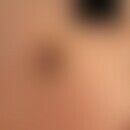Synonym(s)
HistoryThis section has been translated automatically.
Anton-Lambrecht 1992
DefinitionThis section has been translated automatically.
Very rare autosomal recessive inherited genodermatosis characterized by a generalized ichthyosis already existing at birth and by severe respiratory insufficiency. In the further course of early childhood lung infections frequently occur.
You might also be interested in
Occurrence/EpidemiologyThis section has been translated automatically.
Apparent worldwide occurrence of the disease (George R et al. 2015; Tsuge I et al. 2015)
EtiopathogenesisThis section has been translated automatically.
Ichthyosis is caused by several different mutations in the SLC27A4 gene , which lead to the same phenotype. The SLC27A4 gene codes for the "fatty acid transport protein 4" (Lin MH et al. 2014), a protein that regulates lipid synthesis. The disorder of epidermal keratinization with disturbance of the barrier function of the skin is primarily expressed in the prenatal period and leads to clinical respiratory problems (especially respiratory function) in the postnatal period. (Severino-Freire M et al. 2018).
ManifestationThis section has been translated automatically.
Existing at birth
Clinical featuresThis section has been translated automatically.
Clinically significant is preterm birth combined with the presence of a generalized, greasy, adherent, Vernix-caeseosa-like horny layer on the capillitium, eyebrows, external auditory canals and trunk. The skin on the palms of the hands and soles of the feet is whitish swollen. Clinically critical is a respiratory insufficiency caused by obstruction of the airways with tough amniotic material.
The affected children may have varying degrees of mental and physical developmental delay. After survival of the severe postpartum phase the prognosis is favourable.
LaboratoryThis section has been translated automatically.
Bluteosinophilia; elevated IgE levels (Khnykin D et al. 2012).
HistologyThis section has been translated automatically.
Typical ultrastructural features with curved lamellar structures, are diagnostically proving. Histologically there is orthohyperkeratosis, acanthosis, inflammatory non-specific dermal infiltrates.
Progression/forecastThis section has been translated automatically.
The primary ichthyotic skin changes heal to a large extent after a few years (2-5 years) (Severino-Freire M et al. 2018). Adults usually only show clinically less conspicuous, generalized fine-lamellar scaling and a subtle erythroderma. Furthermore, the affected persons are prone to atopic diseases. Obstetricians and paediatricians should be informed at an early stage of the complicated birth of a child with ichthyosis prematurity syndrome (Lwin SM et al. 2016).
More than 70% of patients had respiratory or food allergies at a later age (Khnykin D et al. 2012).
Note(s)This section has been translated automatically.
An early sonographic symptom is a blizzard like, grumpy finding of the amniotic fluid.
LiteratureThis section has been translated automatically.
- George R et al (2015) Ichthyosis prematurity syndrome caused by a novel missense mutation in FATP4 gene-a case report from India. Clin Case Rep 4:87-89.
- Khnykin D et al (2012) Ichthyosis prematurity syndrome: clinical evaluation of 17 families with a rare disorder of lipid metabolism.J Am Acad Dermatol 66:606-616.
- Lin MH et al (2014) Fatty acid transporters in skin development, function and disease. Biochim Biophys Acta 1841:362-368.
- Lwin SM et al (2016) Ichthyosis prematurity syndrome: from fetus to adulthood. JAMA Dermatol 152:1055-1058.
- Severino-Freire M et al (2018) Ichthyosis prematurity syndrome: Two new cases. Ann Dermatol Venereol 145:603-606.
- Tsuge I et al (2015) Identification of novel FATP4 mutations in a Japanese patient with ichthyosis prematurity syndrome. Hum Genome Var 2:15003.
Incoming links (1)
SLC27A4 Gene;Outgoing links (1)
SLC27A4 Gene;Disclaimer
Please ask your physician for a reliable diagnosis. This website is only meant as a reference.




